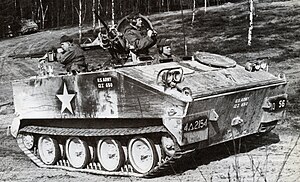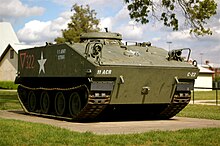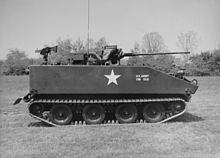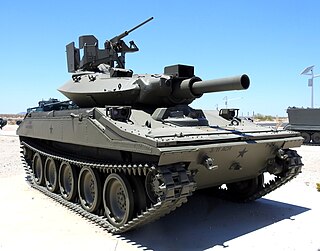
The M551 "Sheridan" AR/AAV was a light tank developed by the United States and named after General Philip Sheridan, of American Civil War fame. It was designed to be landed by parachute and to swim across rivers. It was armed with the technically advanced but troublesome M81/M81 Modified/M81E1 152 mm gun/launcher, which fired both conventional ammunition and the MGM-51 Shillelagh guided anti-tank missile.
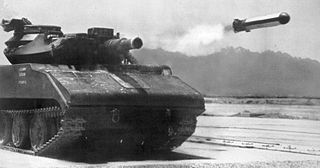
The Ford MGM-51Shillelagh was an American anti-tank guided missile designed to be launched from a conventional gun (cannon). It was originally intended to be the medium-range portion of a short, medium, and long-range system for armored fighting vehicles in the 1960s and '70s to defeat future armor without an excessively large gun. Developing a system that could fire both shells and missiles reliably proved complex and largely unworkable for the United States.

The Army of the Republic of Vietnam composed the ground forces of the South Vietnamese military from its inception in 1955 to the Fall of Saigon in April 1975. At the ARVN's peak, an estimated 1 in 9 citizens of South Vietnam were enlisted, composed of Regular Forces and the more voluntary Regional Forces and the Popular Force militias. It is estimated to have suffered 1,394,000 casualties during the Vietnam War.

The M113 is a fully tracked armored personnel carrier (APC) that was developed and produced by the FMC Corporation. The M113 was sent to United States Army Europe in 1961 to replace the mechanized infantry's M59 APCs. The M113 was first used in combat in April 1962 after the United States provided the South Vietnamese army (ARVN) with heavy weaponry such as the M113, under the Military Assistance Command, Vietnam (MACV) program. Eventually, the M113 was the most widely used armored vehicle of the U.S. Army in the Vietnam War and was used to break through heavy thickets in the midst of the jungle to attack and overrun enemy positions. It was largely known as an "APC" or an "ACAV" by the allied forces.

The 11th Armored Cavalry Regiment is a unit of the United States Army garrisoned at the Fort Irwin National Training Center in California. The regiment has served in the Philippine–American War, the Pancho Villa Expedition, World War II, the Vietnam War, Gulf War and Iraq War. The 11th ACR serves as the opposing force (OPFOR) for the Army and Marine task forces, and foreign military forces that train at Fort Irwin.

The Battle of Ấp Bắc was a major battle fought on 2 January 1963 during the Vietnam War, in Định Tường Province, South Vietnam. On 28 December 1962, US intelligence detected the presence of a radio transmitter along with a sizable force of Viet Cong (VC) soldiers, reported to number around 120, in the hamlet of Ap Tan Thoi in Dinh Tuong Province, home of the Army of the Republic of South Vietnam (ARVN) 7th Infantry Division. The South Vietnamese and their US advisers planned to attack Ap Tan Thoi from three directions to destroy the VC force by using two provincial Civil Guard battalions and elements of the 11th Infantry Regiment, ARVN 7th Infantry Division. The infantry units would be supported by artillery, M113 armored personnel carriers (APCs), and helicopters. However Viet Cong forces anticipated a major attack from the South Vietnamese government from a variety of sources, including movement of supplies, an undercover VC agent and decoded radio communications from the ARVN. Accordingly the VC prepared for an attack by US and South Vietnamese forces.

The M41 Walker Bulldog, officially 76-mm gun tank M41, was an American light tank developed for armed reconnaissance purposes. It was produced by Cadillac between 1951 and 1954 and marketed successfully to the United States Army as a replacement for its aging fleet of World War II-vintage M24 Chaffee tanks. Although engineered as a reconnaissance vehicle, the M41's weight and armament also made it effective in the close infantry support role and for rapid airborne deployments. Upon entering US service, all M41s received the designation Little Bulldog and subsequently, Walker Bulldog after the late General Walton Walker, who was killed in a Jeep accident in 1950. The M41 was the first postwar American light tank to see worldwide service, and was exported in considerable numbers by the United States, particularly to Asia.
Tank development both evolved considerably from World War II and played a key role during the Cold War (1945–1990). The period pitted the nations of the Eastern Bloc and the North Atlantic Treaty Organization (NATO against each other.

The M113½ Command and Reconnaissance Vehicle is a United States-built tracked reconnaissance armoured fighting vehicle, which was originally employed by the armed forces of the Netherlands and Canada and later Bahrain and Chile. Former Dutch vehicles were exported in the 1990s to Bahrain and Chile after being retired from service.
A huge number of M113 Armored Personnel Carrier variants have been created, ranging from infantry carriers to nuclear missile carriers. The M113 armored personnel carrier has become one of the most prolific armored vehicles of the second half of the 20th century, and continues to serve with armies around the world in many roles.
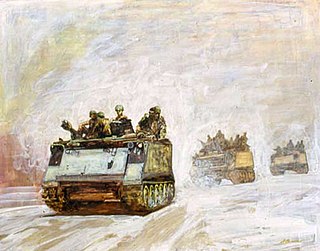
Armoured cavalry are military units using armoured fighting vehicles (AFVs) instead of horses. They began to replace horse cavalry in the heavy shock and the light reconnaissance, skirmishing and exploitation/pursuit roles in most armies commencing after the First World War. In that succeeding capacity, the obsolete name "cavalry" was retained.

The XM800 Armored Reconnaissance Scout Vehicle (ARSV) was an experimental scout vehicle developed by the US Army in the 1970s. It was part of a series of armored vehicles being designed by the Army to replace their existing armored personnel carriers, the M113 and M114, with vehicles with greatly improved fighting capabilities. While the MICV-65 program focused on troop carriers, a separate requirement for a scout vehicle led to the XM800. None of the vehicles from the MICV-65 project entered production, although they provided valuable experience that was used in the M2 Bradley.
MICV-65, short for Mechanized Infantry Combat Vehicle, 1965, was a US Army project that studied a number of armored fighting vehicles that would replace the M113 and M114 as well as take on a variety of new roles. A number of designs were studied as part of the MICV project, but none of them entered service for a variety of reasons. Nevertheless, experience gained in the MICV project eventually led to the M2 Bradley, which incorporates many of the MICV concepts.
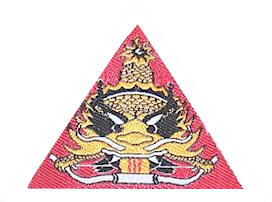
The Presidential Guard was a military unit of the Army of the Republic of Vietnam (ARVN) that was assigned to personally protect the President of the Republic of Vietnam, the nation-state that existed from 1955 to 1975. This force formed the bulwark of defences against continual coups, preventing previous coups against Ngo Dinh Diem, and would be maintained to prevent further coups in the wake of political instability following it.

The United States has produced tanks since their inception in World War I, up until the present day. While there were several American experiments in tank design, the first American tanks to see service were copies of French light tanks and a joint heavy tank design with the United Kingdom.

This article deals with the history and development of American tanks from the end of World War II and during the Cold War.

After World War II the Italian Army had two units named "Centauro": from 1952 to 1986 the Armored Division "Centauro" and from 1986 to 2002 the Armored Brigade "Centauro". Both units were successor to the World War II era 131st Armored Division "Centauro". The units' name came from the mythological race of half human-half horse creatures named Centaurs.

The Mechanized Division "Folgore" was a mechanized division of the Italian Army. Its core units were three mechanized brigades. The brigades headquarters was in the city of Treviso.
Operation Cuu Long 44-02 was an operation during the Vietnam War conducted by South Vietnamese and Cambodian forces from 13-25 January 1971 to reopen Route 4 in Cambodia.

The M113 armoured personnel carriers are American produced military vehicles that have operated in the Australian Army since 1964. An initial pair of M113s was purchased for trials purposes in 1962. Either 817 or 840 were acquired by 1979, comprising nine different variants. A long-running modernisation program that commenced in the 1990s resulted in 431 M113s being upgraded between 2007 and 2012. All of the upgraded M113s remain in service as of 2020.
